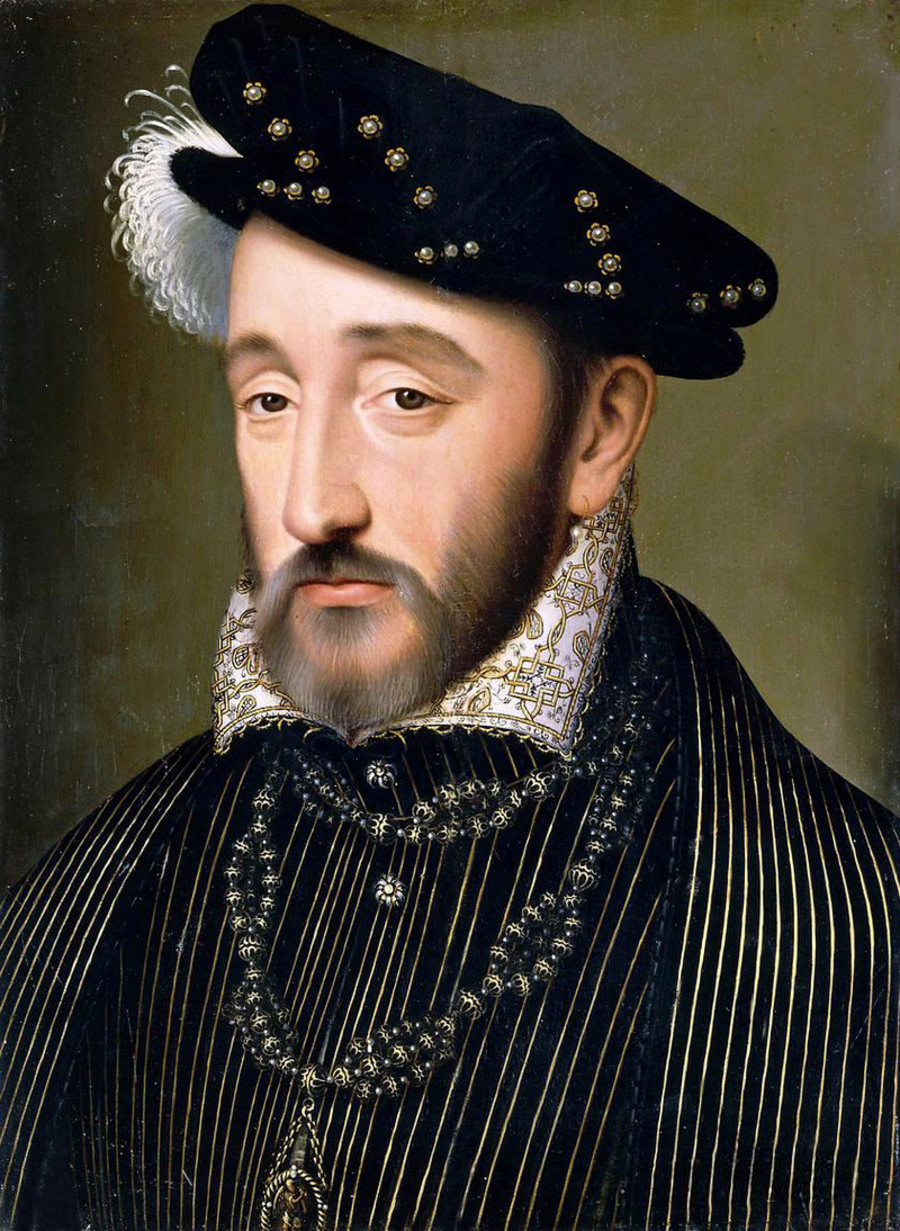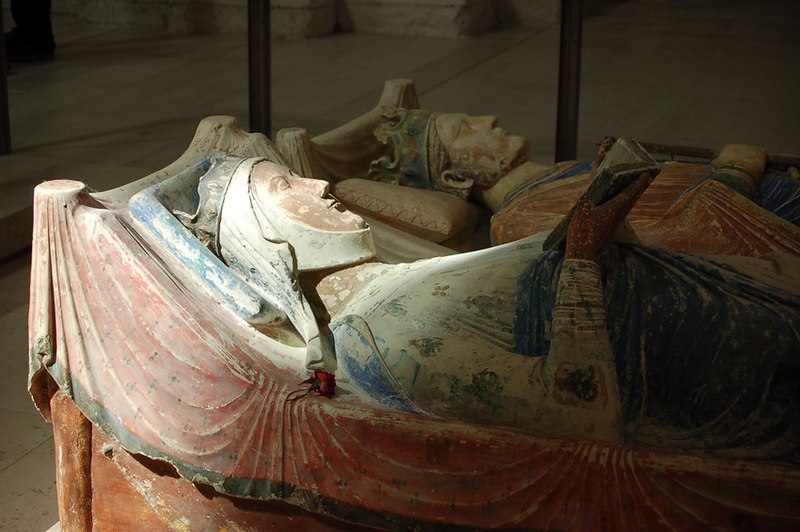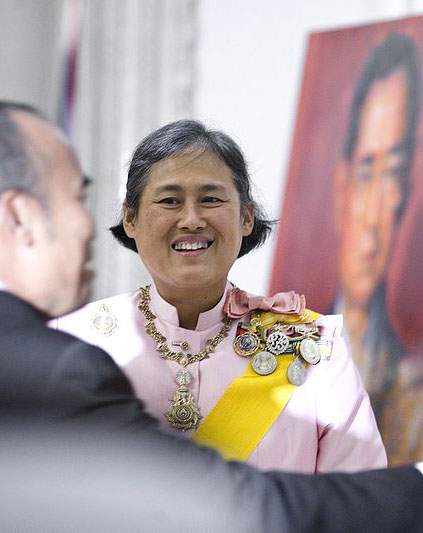© Unofficial Royalty 2025

King Henri II of France; Credit – Wikipedia
March 31, 1359 – Birth of Philippa of Lancaster, Queen of Portugal, daughter of John of Gaunt, granddaughter of King Edward III of England, at Leicester Castle in Leicestershire, England
Philippa was the daughter of John of Gaunt, a son of King Edward III of England, and his first wife Blanche of Lancaster. In 1387, she married King Joáo I of Portugal. They had nine children including Henrique of Portugal, Duke of Viseu, known as Prince Henry the Navigator, who guided Portugal to the Age of Exploration in the Americas. Philippa was also the great-grandmother of Catherine of Aragon, the first wife of King Henry VIII of England.
Unofficial Royalty: Philippa of Lancaster, Queen of Portugal
March 31, 1373 – Birth of Catherine of Lancaster, Queen of Castile, daughter of John of Gaunt, granddaughter of King Edward III of England, at Hertford Castle in Hertfordshire, England
Catherine of Lancaster was the daughter of John of Gaunt, Duke of Lancaster and his second wife Constance of Castile. She was the half-sister of Philippa of Lancaster, above. In 1388, she married King Enrique III of Castile and had three children. Like her half-sister Philippa, Catherine was also the great-grandmother of Catherine of Aragon, the first wife of King Henry VIII of England.
Unofficial Royalty: Catherine of Lancaster, Queen of Castile
March 31, 1519 – Birth of King Henri II of France at Château de Saint-Germain-en-Laye in France
Henri was the son of King François I of France and his first wife Claude, Duchess of Brittany. In 1533, he married the wealthy heiress Catherine de Medici. They had ten children, including three Kings of France. Henri’s reign was marked by the Italian Wars against the House of Habsburg and the suppression of the Protestant Reformation, particularly the persecution of the Protestant French Huguenots, who were becoming a large minority. Henri died on July 10, 1559, at the age of 40, probably from a subdural hematoma and sepsis due to injuries he had suffered in a tournament.
Unofficial Royalty: King Henri II of France
March 31, 1547 – Death of King François I of France at the Château de Rambouillet in France; buried at the Basilica of Saint-Denis near Paris, France
A contemporary of Charles V, Holy Roman Emperor and King Henry VIII of England, François I played an important role in Europe’s foreign policy. In France, he was a patron of the arts, focused on new construction and renovations, and dealt with the Reformation, which started during his reign. In 1524, François financed the expedition of Giovanni da Verrazzano to North America. On this expedition, Verrazzano was the first documented European to visit the present site of New York City (where the Verrazzano Narrows Bridge is named after him) and claimed Newfoundland in present-day Canada for the French crown. In 1534, François sent Jacques Cartier to explore the St. Lawrence River in the present-day Canadian province of Quebec. In 1514, François married Claude, Duchess of Brittany in her own right. They had seven children. When Claude died in 1524, François married Eleanor, Archduchess of Austria, Infanta of Castile, the sister of the powerful Charles V, Holy Roman Emperor. François and Eleanor had no children. François I died on March 31, 1547, aged 52, after a reign of thirty-two years, due to kidney failure. He was succeeded by his only surviving son, Henri II who became King of France on his 28th birthday.
Unofficial Royalty: King François I of France
March 31, 1621 – Death of King Felipe III of Spain in Madrid, Spain; buried at the Monastery of San Lorenzo El Real in El Escorial, Spain
Felipe III’s father, King Felipe II of Spain, died in 1598, and his twenty-year-old son succeeded him as Felipe III, King of Spain. Besides being King of Spain, Felipe III was also King of Portugal, King of Sardinia, King of Naples, King of Sicily, and Duke of Milan. In 1599, Felipe III married 14-year-old Archduchess Margaret of Austria. They had eight children, including Felipe IV, King of Spain. Felipe III’s wife Margaret died at the age of twenty-six from childbirth complications eleven days after giving birth to her eighth child. During Felipe’s reign, Spain was hit by famine due to a series of poor harvests, and there was an outbreak of bubonic plague that killed more than 10% of the population. However, part of the Spanish Golden Age (1492 – 1659), a period of flourishing in the arts and literature, occurred during the reign of Felipe III. He survived his wife by ten years, dying in Madrid, Spain, on March 31, 1621, two weeks before his forty-third birthday, due to erysipelas, a bacterial skin infection.
Unofficial Royalty: King Felipe III of Spain
March 31, 1671 – Death of Lady Anne Hyde, Duchess of York, first wife of James, Duke of York (later King James II of England), at St. James Palace in London, England; buried at Westminster Abbey in London, England
Anne was the daughter of Edward Hyde, later created 1st Earl of Clarendon, an adviser to Charles II, the king in exile in the Netherlands after the English Civil War, and soon became his chief adviser. Charles appointed Hyde Lord Chancellor in 1658. In 1654, while in the Netherlands, Anne Hyde was appointed a maid of honor to Mary, Princess Royal and Princess of Orange, the eldest daughter of King Charles I of England, the widow of Willem II, Prince of Orange, and the mother of the young Willem III, Prince of Orange who would marry Anne’s daughter Mary. Anne was very attractive and stylish and attracted many men, including James, Duke of York, the future King James II of England. On November 24, 1659, Anne and James made a secret marriage in front of witnesses. James and Anne had eight children, but only two survived childhood, and both were Queens Regnant: Queen Mary II and Queen Anne. Anne Hyde never became Queen Consort as she died before her husband became king. Anne died of cancer a few weeks after giving birth to her daughter Catherine, who died in December 1671.
Unofficial Royalty: Lady Anne Hyde, Duchess of York
March 31, 1718 – Birth of Mariana Victoria of Spain, Queen of Portugal at the Royal Alcazar of Madrid in Spain
The daughter of Felipe V, the first Bourbon King of Spain, and his second wife Elisabeth Farnese of Parma, Mariana Victoria married the future José, I, King of Portugal in 1729. The couple had four daughters, including Maria I, Queen of Portugal. After King José suffered a series of strokes, Mariana Victoria was created Regent of Portugal in 1776, and remained Regent until José died in 1777. Mariana Victoria had a significant influence on her daughter Maria I, Queen of Portugal, who often asked her mother’s advice on matters of state.
Unofficial Royalty: Mariana Victoria of Spain, Queen of Portugal
March 31, 1723 – Birth of King Frederik V of Denmark and Norway at Copenhagen Castle in Copenhagen, Denmark
Frederik had a very sensual nature and loved wine and women. He spent so much time visiting Copenhagen’s pubs and brothels that his father, King Christian VI, considered disinheriting him from the throne. When he married Louisa of Great Britain in 1743, the Danish government hoped (incorrectly) that marriage would end his affairs and drunkenness. Frederik and Louisa had five children. When Frederik became king, he did take part in the government by attending council meetings. However, he was afflicted with alcoholism, and most of his reign was dominated by his very able ministers. In 1752, a year after Louisa died due to complications from a miscarriage. Frederik married Juliana Maria of Brunswick-Wolfenbüttel, and the couple had one son. In 1760, Frederik broke his leg in a drunken accident, which affected his health for the rest of his life. He died on January 14, 1766, at Christiansborg Palace in Copenhagen, Denmark at the age of 42.
Unofficial Royalty: King Frederik V of Denmark
March 31, 1750 – Death of Christina Sophia of East Frisia, Princess of Schwarzburg-Rudolstadt, second of the three wives of Friedrich Anton, Prince of Schwarzburg-Rudolstadt, in Rudolstadt, Principality of Schwarzburg-Rudolstadt, now in the German state of Thuringia; first buried at the castle church at Schwarzburg Castle in Schwarzburg, Principality of Schwarzburg-Rudolstadt, now in the German state of Thuringia, later reburied at the Stadtkirche St. Andreas in Rudolstadt
Princess Christina Sophia of East Frisia and Friedrich Anton, Prince of Schwarzburg-Rudolstadt, married in 1729, but their marriage was childless. However, Christina Sophia was the stepmother to her husband’s two surviving children from her husband’s first marriage. During Christina Sophia’s marriage to Friedrich Anton, her husband issued letters of protection to Jewish families and allowed them to settle in Schwarzburg-Rudolstadt. These families developed into the Jewish community of the Principality of Schwarzburg-Rudolstadt.
Unofficial Royalty: Christina Sophia of East Frisia, Princess of Schwarzburg-Rudolstadt
March 31, 1751 – Death of Frederick, Prince of Wales, son of King George II and father of King George III, at Leicester House in London, England; buried at Westminster Abbey in London, England
Frederick was one of the seven Princes of Wales who never became King. In 1736, he married Princess Augusta of Saxe-Gotha-Altenburg. The couple had nine children, including King George III of the United Kingdom and Caroline Matilda, who married Christian VII, King of Denmark and Norway. In March 1751, Frederick became ill after he caught “a chill” while gardening. He became feverish and was bled and blistered, the medical treatment of the time. After a brief recovery, Frederick suffered a relapse and was again bled. On March 21, 1751, Frederick suffered a coughing fit and died suddenly. An autopsy found the cause of death to be a burst abscess in the lung. It was popularly believed that his death was caused by a blow from a cricket ball to his chest, but there is no proof of that.
Unofficial Royalty: Frederick, Prince of Wales
March 31, 1803 – Birth of Marie Luise of Mecklenburg-Schwerin, Duchess of Saxe-Altenburg, wife of Georg, Duke of Saxe-Altenburg, at Ludwigslust Palace in Ludwigslust, Grand Duchy of Mecklenburg-Schwerin, now in Mecklenburg-Vorpommern, Germany
Full name: Marie Luise Friederike Alexandrine Elisabeth Charlotte Catherine
Marie Luise was the wife of Friedrich, Duke of Saxe-Altenburg. The couple had three children. While Duchess of Saxe-Altenburg, Marie Luise did much charity work. Through her Marie Foundation, she founded a women’s association, several schools, and the Lutheran missionary society in Altenburg. Marie Luise died at the age of 59.
Unofficial Royalty: Marie Luise of Mecklenburg-Schwerin, Duchess of Saxe-Altenburg
March 31, 1817 – Birth of Charlotte Canning, Countess Canning, Lady of the Bedchamber to Queen Victoria, at the British Embassy in Paris, France, where her father was serving as the Ambassador to France
Born The Honorable Charlotte Stuart, daughter of Charles Stuart, 1st Baron Stuart de Rothesay, she married Charles Canning, 1st Earl Canning. Charlotte was a Lady of the Bedchamber to Queen Victoria from 1842 until 1855. While many other ladies worried that the position would keep them from their children and families, this was not the case for Charlotte. Having no children, she was free to enjoy her position and took great pride in serving the Sovereign.
Unofficial Royalty: Charlotte Canning, Countess Canning
March 31, 1828 – Death of Ida of Anhalt-Bernburg-Schaumburg-Hoym, Hereditary Princess of Oldenburg, second wife of the future Grand Duke August I of Oldenburg, in Oldenburg, Duchy of Oldenburg, now in Lower Saxony, Germany; buried in the Ducal Mausoleum at Saint Gertrude’s Cemetery in Oldenburg
Ida married the then Hereditary Prince August of Oldenburg, the widower of her elder sister Adelheid. The couple had one son Peter, who succeeded his father. Sadly, Ida died just three years after her marriage.
Unofficial Royalty: Ida of Anhalt-Bernburg-Schaumburg-Hoym, Hereditary Princess of Oldenburg
March 31, 1870 – Death of Sir Charles Grey, Private Secretary to Queen Victoria; buried in St. Michael and All Angels Churchyard at Howick Hall in Howick, Northumberland, England
General The Hon. Sir Charles Grey was Private Secretary to Queen Victoria from 1861 until 1870. He was the son of Charles Grey, 2nd Earl Grey and The Hon. Mary Ponsonby. His father would later serve as Prime Minister from 1830-1834, and is the person for whom ‘Earl Grey Tea’ is named. In 1836, Charles married Caroline Eliza Farquhar, the daughter of Sir Thomas Farquhar, 2nd Baronet. Caroline would later serve as an Extra Woman of the Bedchamber to Queen Victoria from 1870-1890. The couple had six children. In 1849, Charles was appointed Private Secretary to Prince Albert. He was given apartments at St. James’s Palace and lived in the Norman Tower at Windsor Castle, and at Osborne Cottage at Osborne House, and his children grew up as playmates of some of Victoria and Albert’s children. Over the next twelve years, he became an influential member of the royal household and a close confidante and advisor to Prince Albert. After Albert died in 1861, Charles seamlessly moved into the position of Private Secretary to Queen Victoria, Prince Albert’s role since he and Victoria married in 1840. Charles remained Queen Victoria’s Private Secretary until he died in 1870.
Unofficial Royalty: Sir Charles Grey, Private Secretary to Queen Victoria
March 31, 1900 – Birth of Prince Henry, Duke of Gloucester, son of King George V of the United Kingdom, at York Cottage in Sandringham, Norfolk, England
Full name: Henry William Frederick Albert
In 1935, Henry married Lady Alice Montagu Douglas Scott, a daughter of John Montagu Douglas Scott, 7th Duke of Buccleuch. They had two sons: Prince William of Gloucester, who died in 1972 in a plane crash at an air show, and Prince Richard, Duke of Gloucester. Henry had a military career in the British Army and served with The King’s Royal Rifle Corps and the 10th Royal Hussars. He retired from active duty in 1937, but served with the British Expeditionary Force during World War II. Henry served as Governor-General of Australia from 1945 to 1947. In 1965, while driving home after Winston Churchill’s funeral, Henry suffered a stroke, causing a car accident. Three years later, he suffered another stroke, which left him incapacitated for the remainder of his life. On June 10, 1974, Prince Henry, Duke of Gloucester died at Barnwell Manor, his country home at the age of 73.
Unofficial Royalty: Prince Henry, Duke of Gloucester
March 31, 1931 – Death of Sir Arthur Bigge, 1st Baron Stamfordham, Private Secretary to Queen Victoria and King George V, at St. James’s Palace in London, England; buried at Brompton Cemetery in London, England
Lieutenant Colonel The Right Honourable Sir Arthur John Bigge was Private Secretary to Queen Victoria from 1895 until The Queen died in 1901. He then served as Private Secretary to the future King George V from 1901 – 1910, and for twenty-one years of King George V’s reign until he died in 1931. Arthur’s service in the Royal Household began in 1880 when he was appointed Groom-in-Waiting, and then quickly named Assistant Private Secretary to Queen Victoria. Later that year, he was also appointed Assistant Keeper of the Privy Purse, and served until 1895. In May 1895, he succeeded Sir Henry Ponsonby as Private Secretary to The Queen and served until Her Majesty’s death in January 1901. In 1881, Arthur married Constance Neville, and they had three children. On March 31, 1931, following several weeks of illness, Arthur died at his apartments in St. James’s Palace in London, England.
Unofficial Royalty: Sir Arthur Bigge, 1st Baron Stamfordham
This article is the intellectual property of Unofficial Royalty and is NOT TO BE COPIED, EDITED, OR POSTED IN ANY FORM ON ANOTHER WEBSITE under any circumstances. It is permissible to use a link that directs to Unofficial Royalty.










